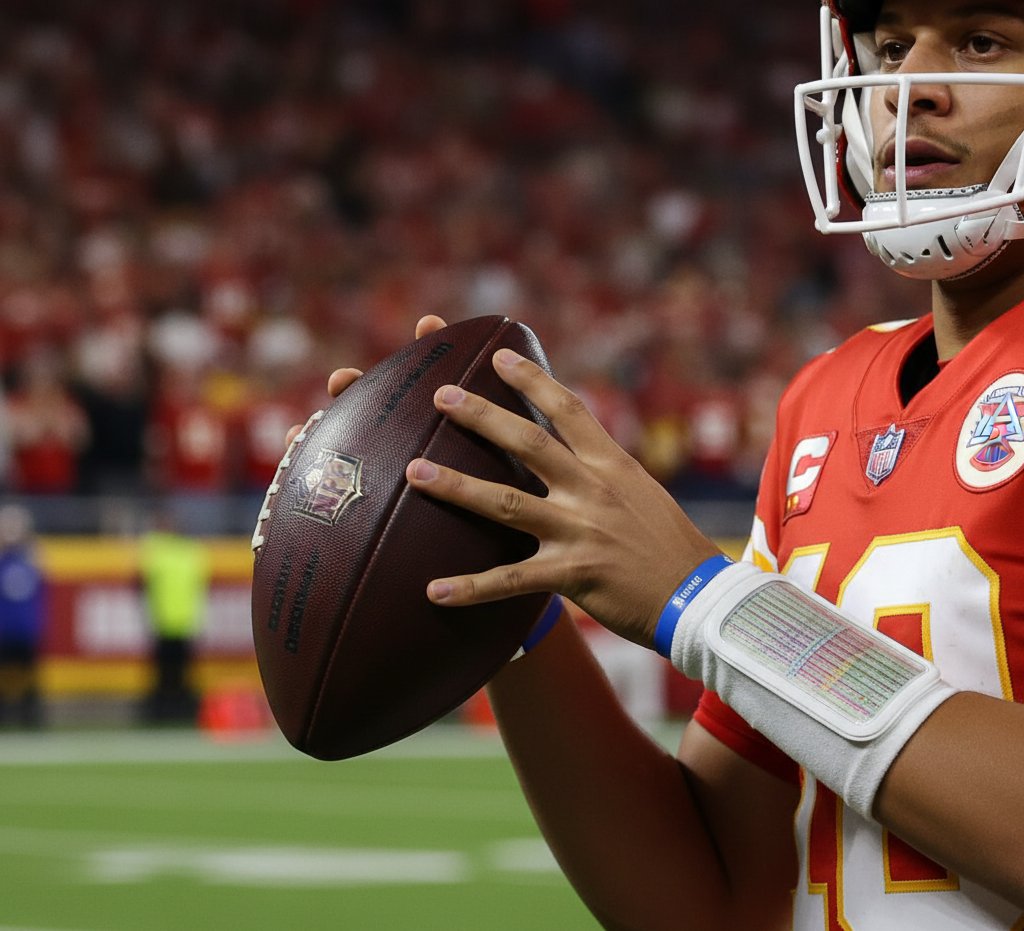When it comes to modern NFL quarterbacks, few names shine brighter than Patrick Mahomes, the Kansas City Chiefs superstar. His ability to throw pinpoint passes, launch deep bombs, and improvise with creative sidearm throws has made him one of the most exciting players in football history. But behind every highlight reel throw is a fundamental question: How does Patrick Mahomes hold a football?
Understanding his grip, finger placement, and throwing mechanics can give fans, young quarterbacks, and coaches insight into why he is so effective. In this article, we’ll break down Mahomes’ football grip, compare it to other NFL quarterbacks, and explain why it works so well for him.
The Importance of a Quarterback’s Grip
Before diving into Mahomes specifically, it’s important to understand why grip matters so much in football. A quarterback’s grip determines:
Accuracy: Proper grip allows better control over the ball’s trajectory.
Velocity: Strong finger placement adds power and spin.
Consistency: A repeatable grip ensures dependable throws under pressure.
Ball Security: Holding the ball correctly reduces fumbles when hit.
Every quarterback has a slightly different hand size and comfort preference, so while fundamentals exist, no two grips are identical.
Patrick Mahomes’ Hand Size and Advantage
One reason Mahomes’ grip works so well is his exceptional hand size. His hands reportedly measure 9 ¼ inches, which gives him a natural advantage in gripping and controlling the football.
Larger hands help quarterbacks:
Spread their fingers across the laces.
Maintain control in wet or cold conditions.
Adjust quickly for different types of throws (short passes, deep balls, sidearm deliveries).
Mahomes’ hand size allows him to experiment with unorthodox throws while still maintaining accuracy.
How Patrick Mahomes Holds a Football
1. Finger Placement on the Laces
Patrick Mahomes places his index finger just behind the tip of the football, while his middle finger and ring finger rest firmly on the laces. His pinky finger provides balance on the lower lace area, and his thumb anchors underneath the ball.
This setup creates maximum spin when he releases the ball, generating a tight spiral that cuts through the air.
2. Light but Firm Grip
Unlike some quarterbacks who choke the ball tightly, Mahomes uses a light grip. This allows for better wrist flexibility and faster release times. A looser grip also makes it easier for him to throw sidearm or off-balance passes.
3. Quick Release Mechanics
Mahomes’ grip supports his quick release. He doesn’t have to fully wind up; instead, he can flick the ball with his wrist and fingers, delivering accurate passes in tight windows.
4. Adaptable Grip for Different Throws
Deep Throws: He leans more on finger pressure for power.
Sidearm Throws: He shifts grip slightly to maintain control at lower arm angles.
No-Look Passes: His loose grip makes it possible to disguise the direction of the throw until the very last second.
Comparing Mahomes’ Grip to Other NFL Quarterbacks
Patrick Mahomes’ grip isn’t identical to other elite quarterbacks, which explains his unique style:
Tom Brady: Uses a very structured, traditional grip with tight spirals.
Aaron Rodgers: Similar adaptability with a quick release, though Rodgers relies more on arm mechanics than grip adjustments.
Josh Allen: Bigger hands give him raw power, but his grip emphasizes strength more than finesse.
Mahomes combines elements of all three—tight spirals, quick release, and adaptability—making his grip especially versatile.
Why Mahomes’ Grip Works So Well
Hand Size Advantage – Larger hands give him better ball control.
Baseball Background – Growing up playing baseball, Mahomes learned how to grip and release balls in unconventional ways. That translates to his football grip.
Flexibility – His grip isn’t rigid; it adapts to different situations.
Wrist Strength – A lighter grip plus strong wrist flick creates velocity and spin.
Lessons Young Quarterbacks Can Learn
For aspiring QBs who want to emulate Patrick Mahomes, here are some takeaways:
Don’t Squeeze Too Hard: A lighter grip allows faster, cleaner throws.
Spread Fingers Across the Laces: This ensures better spin and control.
Practice Different Arm Angles: Like Mahomes, train your grip for sidearm and off-platform throws.
Focus on Wrist Strength: The grip works best when paired with strong wrists and forearms.
However, young players should also remember that Mahomes’ style is unique to his athleticism and hand size. It’s best to start with fundamentals before experimenting with advanced techniques.
Famous Throws That Showcase His Grip
The Left-Handed Pass (2018 vs. Broncos) – Even when switching hands, his grip knowledge allowed him to complete a crucial throw.
The No-Look Pass – Mahomes’ grip stability gives him confidence to release without fully aiming.
Deep Bombs to Tyreek Hill – His grip produces maximum spin and velocity for 60+ yard passes.
Super Bowl Sidearm Throws – His off-angle grip and release under pressure show his adaptability.
Final Thoughts
So, how does Patrick Mahomes hold a football? He uses a grip that combines fundamentals with flexibility: fingers spread across the laces, a light but controlled hold, and adaptability that allows him to throw from multiple angles. His large hands and baseball background enhance this grip, making him one of the most dynamic throwers in NFL history.
For young players and football fans, studying Mahomes’ grip is more than just a technical lesson—it’s a reminder that fundamentals can be mastered but creativity makes the difference.

